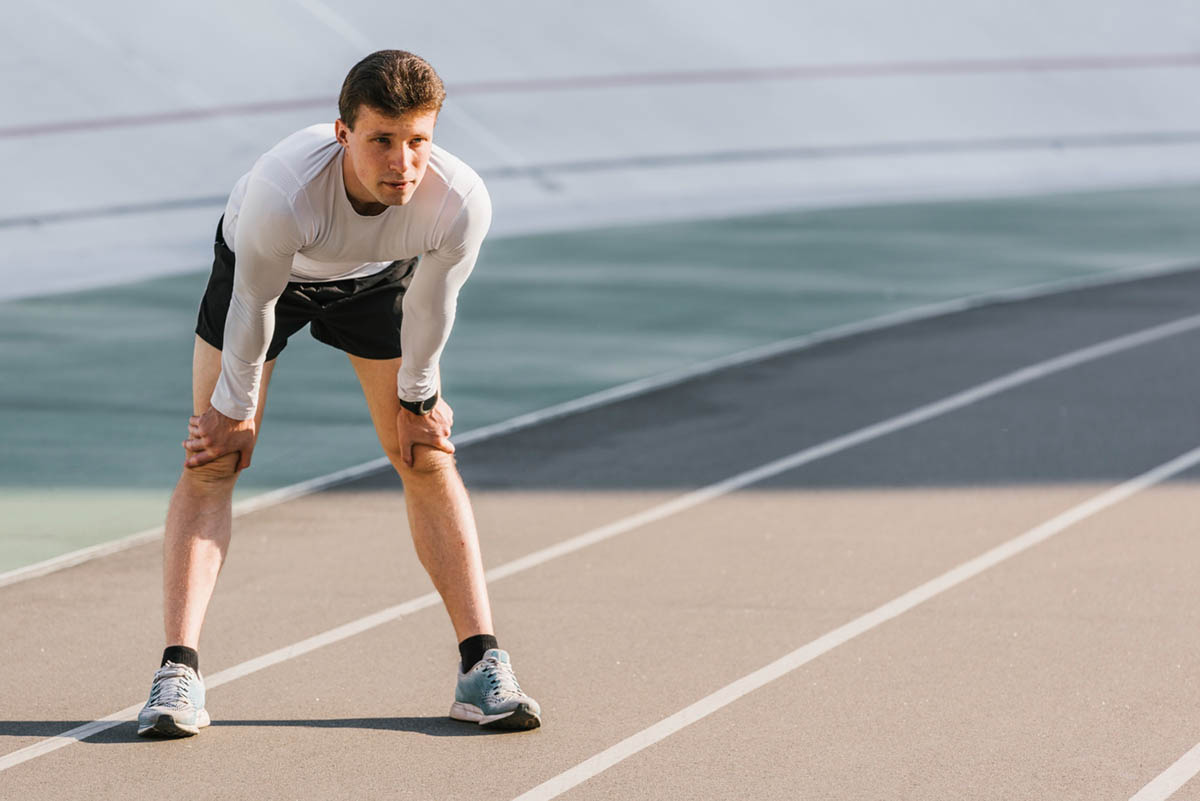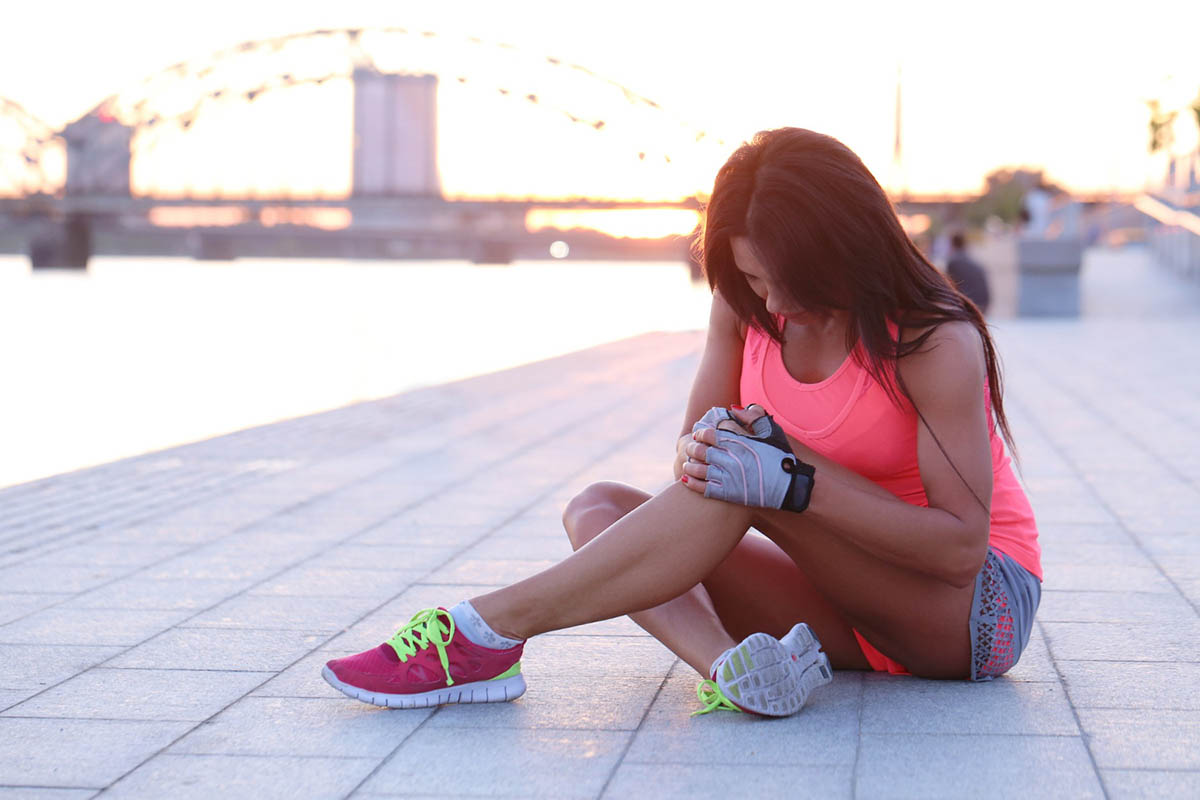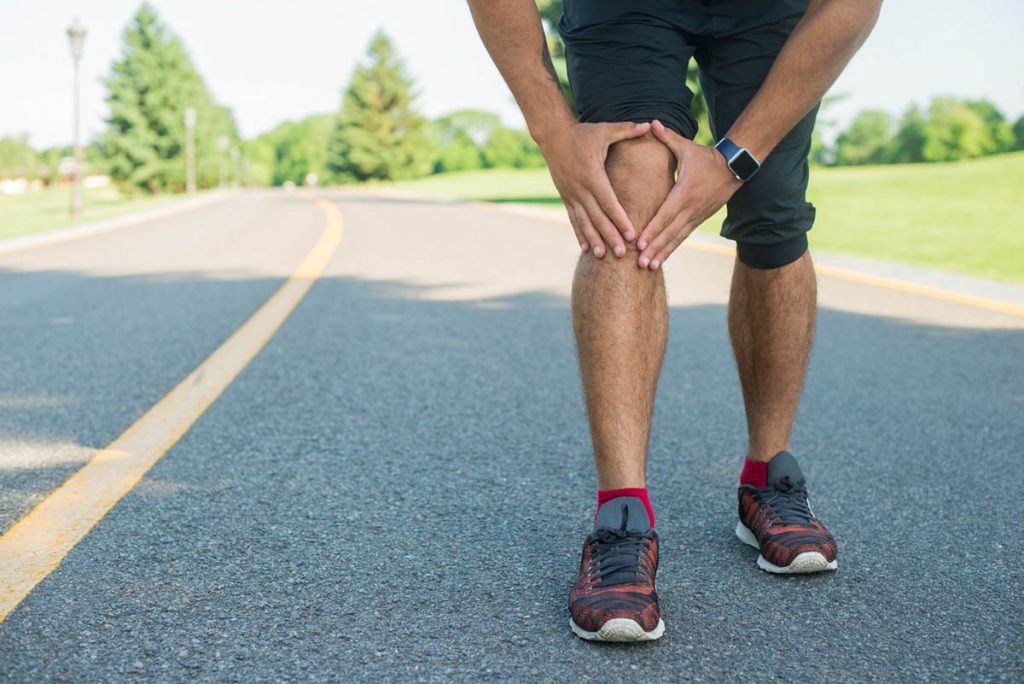Running is one of the most effective ways to stay fit and maintain a healthy lifestyle. However, for many runners, the joy of hitting the pavement can be overshadowed by the onset of inner knee pain running. This common issue often results from overuse, improper technique, or underlying conditions and can range from mild discomfort to debilitating pain if left untreated. Recognizing the root causes of inner knee pain is essential for developing effective treatment strategies and preventing long-term complications. Statistics show that nearly 50% of runners experience injuries yearly, with 70–80% attributed to overuse, primarily affecting the knees. By addressing inner knee pain promptly, runners can safeguard their performance, enhance recovery, and ensure their overall well-being.
What is Inner Knee Pain?
Inner knee pain after running refers to discomfort or tenderness inside the knee joint, often felt during or after running. Depending on its severity and cause, it can range from mild irritation to debilitating pain. This pain can be particularly frustrating for runners, as it may interrupt training schedules and impact overall fitness levels.
Common Causes of Inner Knee Pain After Running
Inner knee pain after running can arise from various factors, often linked to repetitive stress, improper technique, or underlying medical conditions. Understanding these common causes is key to addressing the issue effectively and preventing further discomfort.
Overuse
Overuse injuries frequently cause inner knee pain. Running places repetitive stress on the knees, leading to inflammation and irritation. Overuse is widespread among runners who suddenly increase mileage or intensity without proper conditioning.
Trauma
A sudden impact, such as a fall or collision, can traumatize the knee joint, leading to inner knee pain. Even minor injuries, if untreated, can cause persistent discomfort.
Weakness in Muscle
Weak muscles around the knee, particularly the quadriceps and hamstrings, can lead to instability. This instability may strain the inner knee, resulting in pain after running.
Muscle Tightness
Tight muscles, such as the iliotibial (IT) band or hamstrings, can pull on the knee joint and cause discomfort. Regular stretching and mobility exercises can mitigate this issue.
Damage to the Ligaments or Cartilage
The knee’s ligaments and cartilage are vital in stabilizing and absorbing shock. Damage, such as an anterior cruciate ligament (ACL) sprain or cartilage wear, can manifest as inner knee pain after running.
Development of Osteoarthritis
Osteoarthritis is a degenerative condition characterized by cartilage breakdown. It can cause pain, stiffness, and swelling in the inner knee, particularly after repetitive activities like running.
Knee Bursitis
Bursitis occurs when the bursae, tiny fluid-filled sacs cushioning the knee, become inflamed. This inflammation often results from repetitive motion or prolonged kneeling.
Meniscus Tear
A tear in the meniscus, the cartilage that cushions the knee, can cause sharp inner knee pain. Meniscus injuries are common among runners, especially during quick directional changes.
Tendinitis
Tendinitis involves inflammation of the tendons around the knee, often due to repetitive strain. This condition can lead to persistent inner knee pain during and after running.
Symptoms of Inner Knee Pain After Running

The symptoms of inner knee pain from running can vary widely, from mild discomfort to severe, debilitating pain. Studies estimate that nearly 25% of American adults suffer from chronic knee pain, highlighting how widespread this issue is. Recognizing these signs early is crucial for identifying the underlying cause and seeking appropriate treatment.
Swelling and Stiffness in Knee
Swelling and stiffness are common indicators of knee injuries or inflammation, often caused by overuse or trauma. These symptoms can make it difficult to bend or straighten the knee fully, affecting mobility.
Sharp Pain Beneath Kneecap
Sharp, localized pain beneath the kneecap often signals a specific injury, such as a meniscus tear or ligament damage. This type of pain is typically aggravated by activities like running, squatting, or climbing stairs.
Throbbing Knee Pain
A throbbing sensation in the knee often points to inflammation or overuse of the joint. It can persist during rest periods and may worsen with prolonged activity.
Difficulty Walking or Running
Difficulty walking or running is a common sign of knee instability or structural issues. This symptom often accompanies pain and may limit daily activities or athletic performance.
Difficulty Standing Up
Pain or weakness while standing can indicate instability in the knee joint or damage to supporting structures. This discomfort can interfere with routine movements like rising from a seated position.
Pain in the Inner Side of the Knee Joint
Pain localized to the inner side of the knee joint is a hallmark of inner knee pain after running. It can result from overuse, ligament strain, or cartilage damage.
Aching Pain Radiating Around the Knee
Aching pain that radiates around the knee often stems from deeper issues such as ligament tears, osteoarthritis, or referred pain from other areas. This type of pain can be persistent and challenging to pinpoint.
How to Diagnose Inner Knee Pain After Running
Diagnosis typically involves a combination of physical exams, imaging tests like X-rays or MRIs, and a review of your activity history. A thorough evaluation helps pinpoint the cause of pain in the inner knee after running and guides treatment planning.
Treatment for Inner Knee Pain After Running
Effective treatment for inner knee pain after running focuses on addressing the underlying cause while alleviating symptoms. Combining self-care methods with professional interventions can help reduce pain, restore mobility, and prevent future injuries.
RICE Method
Rest, ice, compression, and elevation are the first steps to alleviate pain and swelling associated with inner knee pain. This method is especially effective immediately after the onset of pain or injury to minimize inflammation and promote recovery.
Heat Therapy
Applying heat improves blood flow to the affected area, which helps relax tight muscles and reduce stiffness in the knee. Heat therapy is particularly beneficial for preparing the joint for movement before physical activity.
Pain Medication
Over-the-counter pain relievers, such as ibuprofen or acetaminophen, can help temporarily manage pain and inflammation. These medications provide short-term relief while you address the root cause of the knee pain through other treatments.
Physical Therapy
Physical therapy is a cornerstone of effective treatment for inner knee pain after running. Targeted exercises and therapies strengthen the muscles surrounding the knee, improve joint stability, and enhance overall mobility. At Land and Sea Physical Therapy, our skilled professionals design personalized treatment plans to address the root causes of knee pain. Using evidence-based techniques, we aim to reduce pain, restore function, and prevent future injuries.
Change of Footwear
Worn-out or unsupportive shoes can exacerbate inner knee pain by failing to provide adequate shock absorption and stability. Choosing footwear with proper cushioning and arch support reduces knee strain and prevents further complications.
Preventing Inner Knee Pain After Running

Preventing inner knee pain after running requires proactive measures to reduce knee strain and support overall joint health. By incorporating proper preparation and recovery techniques, runners can minimize the risk of injury and maintain peak performance.
Tips Before Running
Preparing before a run is essential for protecting your knees and reducing the risk of inner knee pain. Incorporating warm-ups, strength training, and wearing appropriate running shoes can significantly enhance joint stability and overall performance.
- Warm up thoroughly to prepare your muscles and joints.
- Focus on strength training to support the knee.
- Wear proper running shoes suited to your gait and activity level.
Post-run Care
Post-run care is crucial for preventing knee pain and promoting recovery after running. Stretching, foam rolling, and proper hydration help alleviate muscle tension and support joint health, ensuring your body is ready for the next run.
- Stretch your muscles to improve flexibility and reduce tightness.
- Use foam rollers to release tension in the IT band and hamstrings.
- Hydrate and refuel your body to aid recovery.
When to Seek Professional Help
If knee pain persists over a few days, worsens with activity, or is accompanied by swelling or instability, consult a healthcare provider. Land and Sea Physical Therapy offers specialized care to diagnose and treat knee pain, ensuring a safe return to running.
Get Back to Running Pain-Free with Land and Sea PT
At Land and Sea Physical Therapy, we understand how frustrating it can be to deal with inner knee pain. Our physical therapy services are designed to identify the root cause of your discomfort and provide targeted treatments to address it. Combining evidence-based techniques and personalized care, we help you regain confidence and enjoy pain-free runs. Request an appointment today to start your recovery journey.
Conclusion
Inner knee pain after running can significantly affect your performance and overall quality of life. By understanding its causes, recognizing the symptoms, and exploring effective treatment options, you can take proactive measures to manage and prevent this common issue. Early intervention is crucial for maintaining your running routine, avoiding long-term complications, and ensuring a pain-free, enjoyable running experience.
FAQs
Does inner knee pain go away?
Yes, mild inner knee pain often resolves with adequate rest, the application of ice, and proper care to reduce inflammation. However, if the pain persists or worsens, it may indicate an underlying issue that requires professional evaluation and treatment.
How do I fix my inner knee pain when running?
Fixing inner knee pain starts with identifying the underlying cause and resting the knee to prevent further strain. Strengthening the muscles around the knee and consulting a healthcare professional for tailored physical therapy can also effectively resolve the pain.
Is walking good for inner knee pain?
Walking can be helpful for mild inner knee pain as it encourages gentle movement and promotes circulation without excessive strain. However, if walking aggravates your pain, it is best to rest and consult a healthcare provider for guidance.

